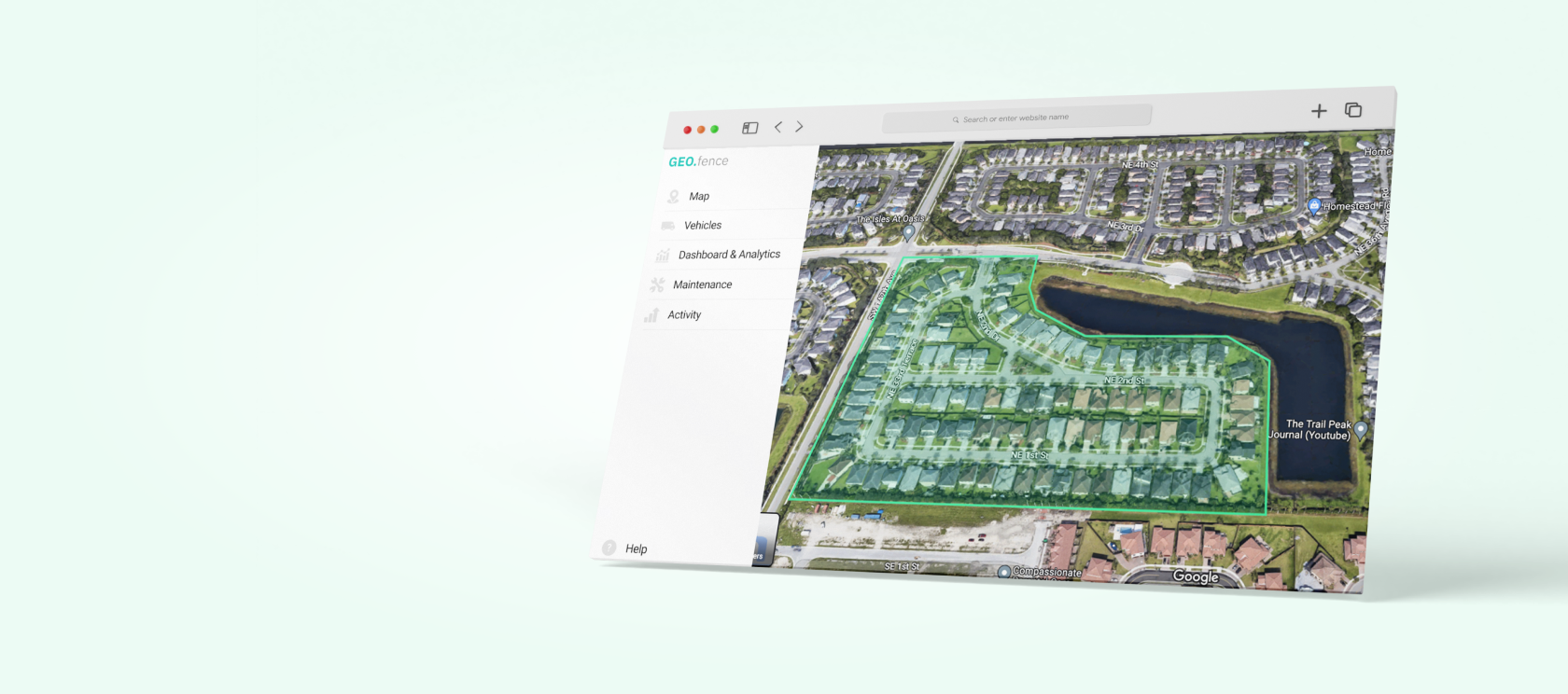Are you wondering how you can use geofencing in fleet management to keep your finger on the pulse of your assets at all times?
With the need to manage a growing number of vehicles, drivers, and assets, fleet management has become increasingly complex in recent years.
And one of the key tools that fleet managers can use to streamline their operations is geofencing. It can greatly enhance operational efficiency and security, allowing carrier fleets to optimize their operations. For example, geofencing helps reduce wait times by providing accurate delivery times and proactive issue resolution.
In this comprehensive guide, we will dive into the ins and outs of geofencing and how it can be used in fleet management to enhance safety, security, efficiency, compliance, and more. If you’re looking to implement geofencing effectively in your fleet management strategy, consider exploring our vehicle fleet management software development services. Our experts can tailor geofencing solutions to your specific needs, further optimizing your fleet operations.
What is geofencing in fleet management?
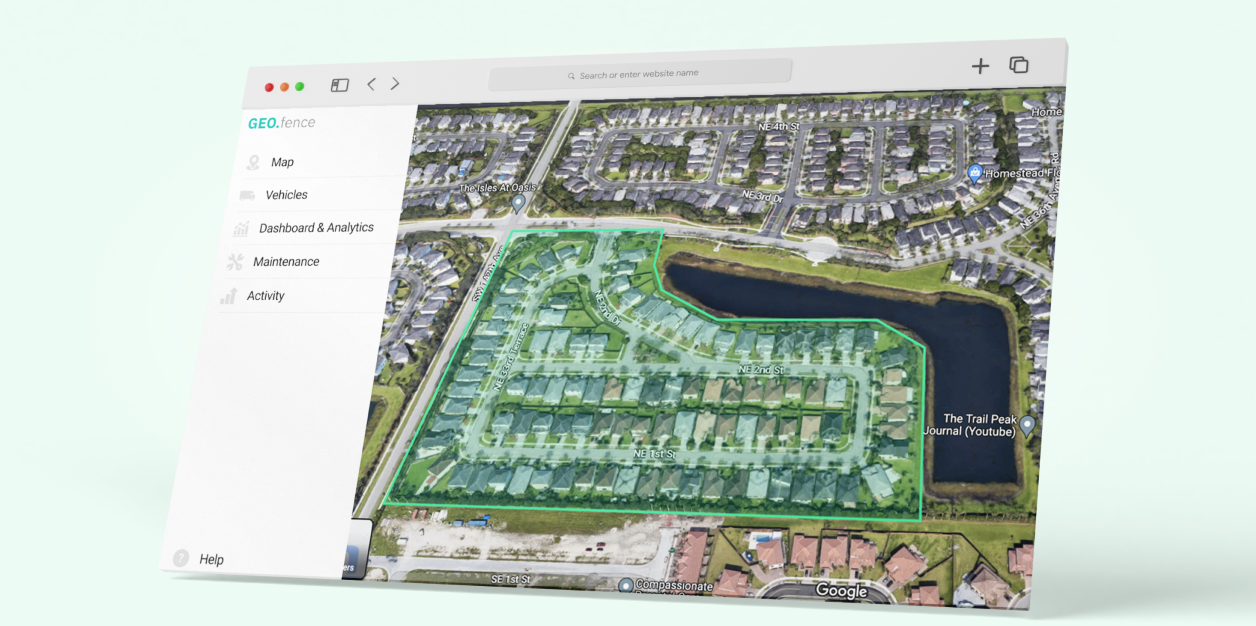
Geofencing is a feature in fleet management systems that allows you to create virtual boundaries (aka geofences) around specific real-world geographic areas.
These geofences can be customized to any size or shape, from small areas around a single address to large territories encompassing entire cities or regions.
When a vehicle enters or exits a geofenced area, the fleet management system can automatically trigger certain actions or alerts, such as sending mobile push notifications to the driver or fleet manager.
Geofencing technology plays a crucial role in providing managers with real-time visibility and control over their assets. A good example of geofencing technology is when managers receive alerts when their vehicles enter or exit job sites.
It can also help improve customer satisfaction by providing more accurate delivery times, and by enabling companies to proactively address any issues that may arise.
However, geofencing use cases span across multiple industries and can be tailored to a business’s specific needs, making it an effective technology for optimizing operations.
How to use geofencing in fleet management & ways it can improve operations
Geofencing is a versatile tool that can be used in a variety of ways to improve fleet management operations. Implementing this technology can improve performance, asset utilization, and set boundaries effectively.
Keep in mind that it is important to consider the requirements of the entire fleet to ensure that the technology is customized to meet their specific needs.
1) Simplify time and payroll management
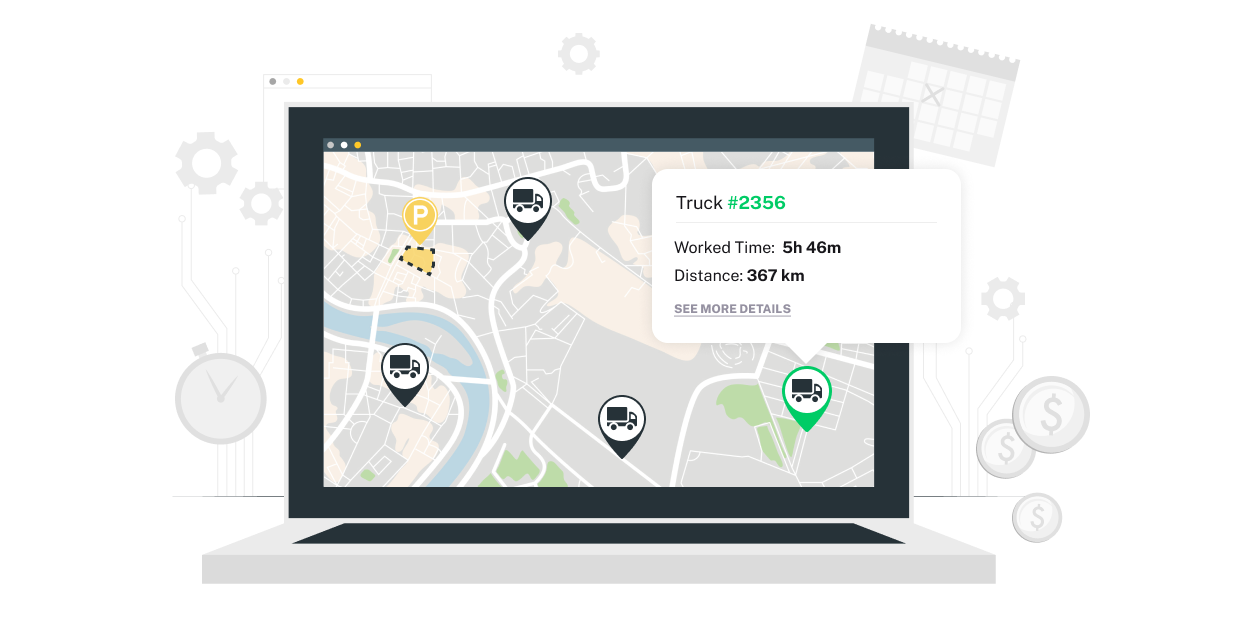
Geofencing technology can automate time and payroll management when it comes to compensating hourly-paid drivers.
With virtual time stamps and cards integrated with geofences, fleet management software can accurately record drivers’ work time as they pass through geofenced perimeters.
This valuable data provides managers with insights for payroll processing and other business decisions.
2) Improve safety
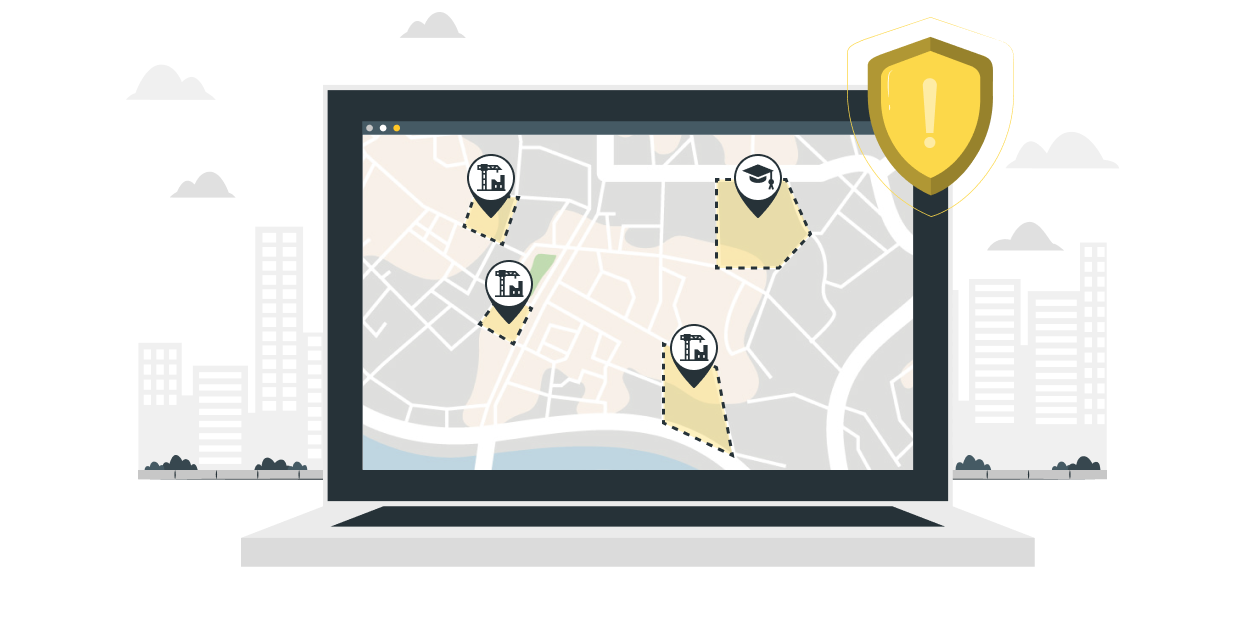
GPS-based geofencing can be used to create perimeters around sensitive areas such as school zones or construction sites, ensuring added protection and adherence to regulations.
This technology can be particularly useful for fleet managers who need to keep track of critical shipments and ensure that they arrive at their destination on time and in good condition.
Geofencing and GPS tracking can help you guarantee the integrity of temperature-sensitive freight during transportation and secure delivery of medical supplies.
The fleet management system can send an alert to the driver or fleet manager, reminding them to exercise caution and adhere to specific safety procedures.
Also, the implementation of geofencing technology can help prevent vehicle theft. Also, it can provide added security and monitoring for construction equipment.
3) Ensure asset security
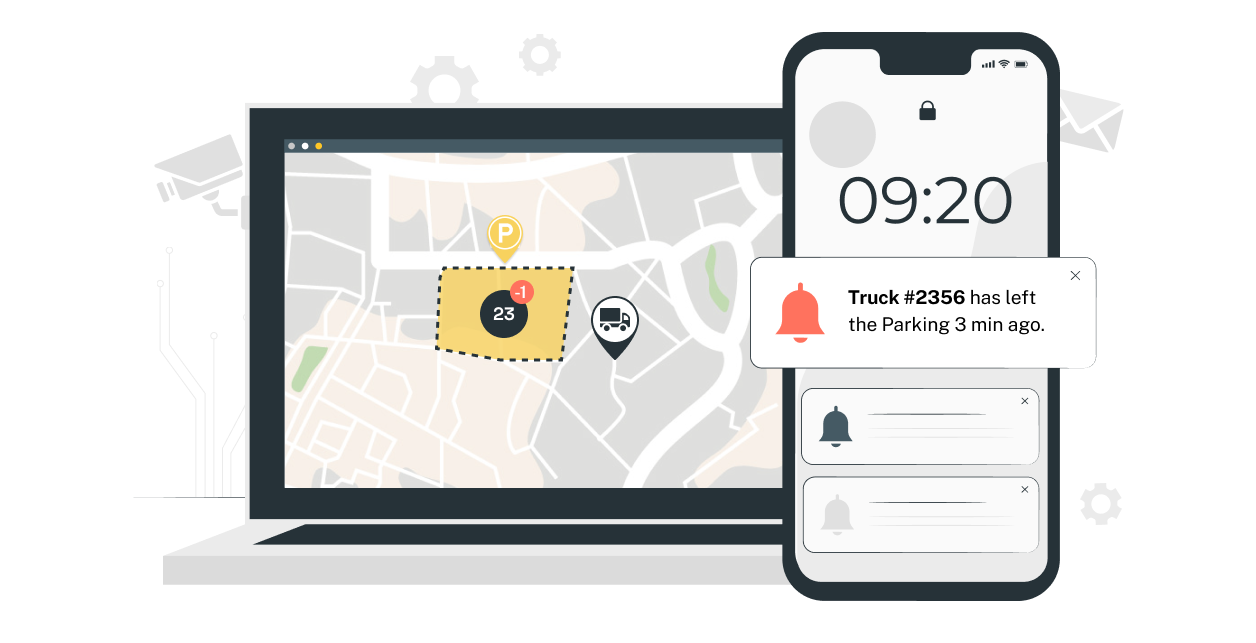
The implementation of geofencing technology can enhance the efficiency and transparency of your supply chain. It can be used to create virtual perimeters around company facilities, a job site, or customer locations, providing additional security and control over these areas.
Geofencing technology can provide fleet managers with detailed information and help prevent theft by creating boundaries around designated areas. Also, fleet managers can have real-time visibility into the location and status of their fleet assets.
The fleet management system can send an automatic alert to the fleet manager, allowing them to monitor the location of their vehicles in real-time and take appropriate action if necessary.
4) Maintain compliance
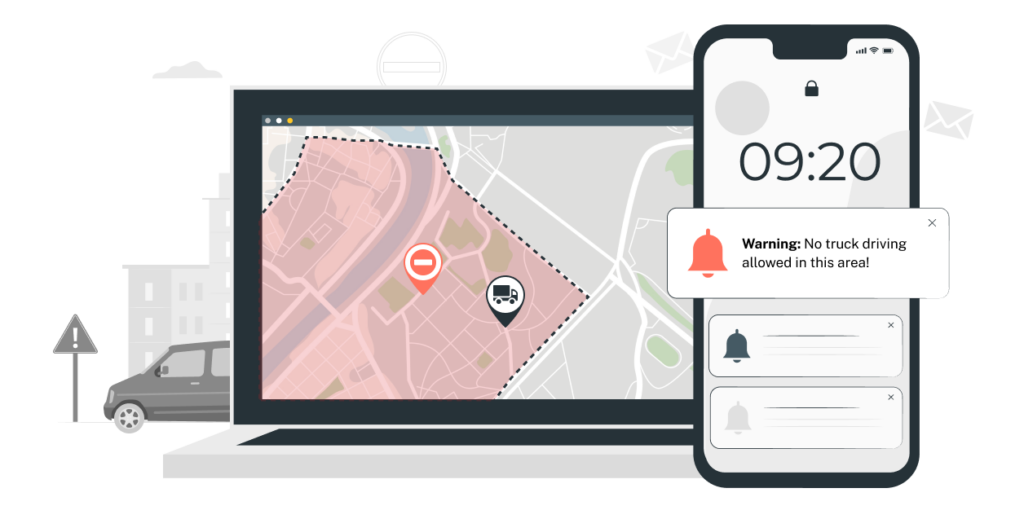
Geofencing can be used to monitor driver behavior and ensure compliance with safety protocols and regulations.
For example, fleet managers can create geofences around areas where fleet vehicles are not allowed, such as restricted roads or hazardous locations.
When a vehicle enters or exits a geofenced area, the fleet management system can alert the driver or fleet manager, ensuring that they are aware of the violation and can take corrective action.
5) Improve reporting
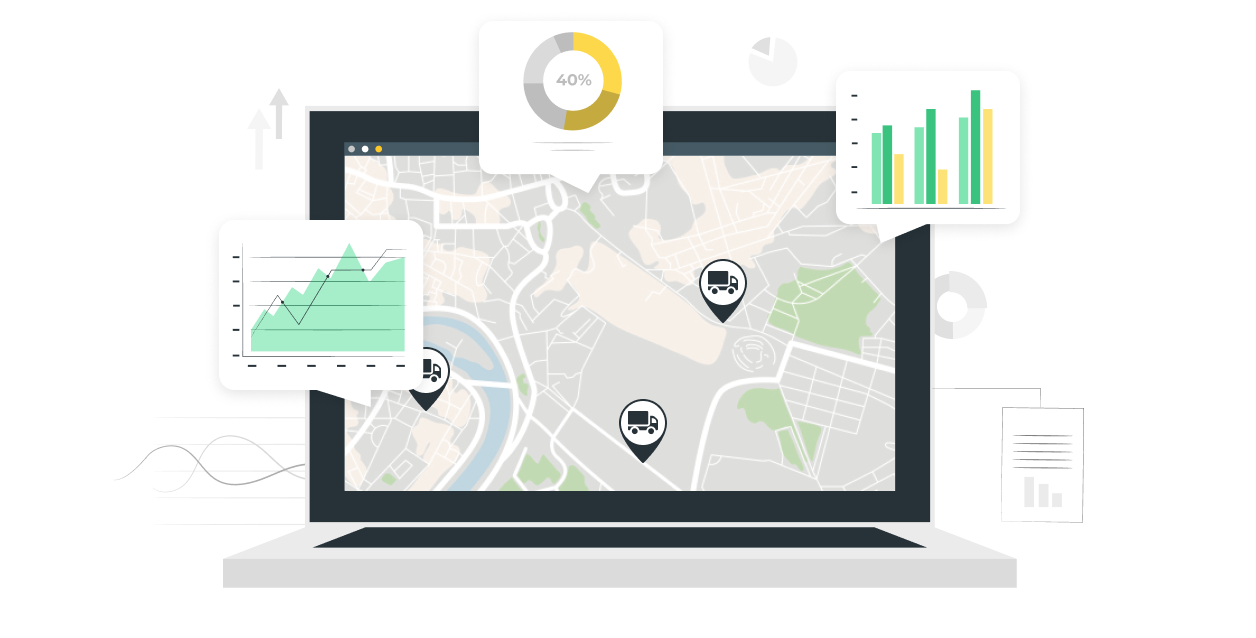
Geofencing technology can improve reporting and analytics in fleet management. It does this by providing automated reports on key performance indicators such as vehicle utilization, driver behavior, and adherence to service level agreements.
Geofencing technology utilizes GPS data to create virtual perimeters and enhance fleet management operations. The implementation of geofencing technology can enhance the transparency of your supply chain, ensuring better control over your assets.
These automated reports can help fleet managers identify areas for improvement and make data-driven decisions to optimize their operations.
Our experience: implementing geofencing in fleet management for Fleetsu and RoadHunter
Our experts have recently implemented geofencing technology for fleet management operations at Fleetsu and RoadHunter.
Fleetsu
Fleetsu specializes in providing fleet management solutions for businesses to optimize their vehicle fleets usage, reduce costs, and increase efficiency. With the implementation of geofencing technology, Fleetsu can now create virtual boundaries around specific locations, alerting managers when their vehicles enter or leave those areas.
RoadHunter
RoadHunter, on the other hand, offers a navigation system specifically designed for truck drivers. By integrating geofencing technology, RoadHunter can provide geofence alerts to drivers when they approach specific locations, such as construction zones or low bridges, to ensure safe and efficient navigation.
Our team of experts worked closely with both Fleetsu and RoadHunter to ensure that the geofencing technology was customized to meet their specific needs and requirements. The implementation has been a success, with improved efficiency and productivity for both companies. For a comprehensive guide to building fleet management software, please refer to our detailed resource on this topic.
How we can help you to implement geofencing in your fleet
Geofencing is a powerful tool that can be used in a variety of ways to improve the efficiency of fleet management operations.
By leveraging the capabilities of a fleet management system with geofencing, fleet managers can improve security, efficiency, compliance, and more.
At Volpis, we specialize in developing custom software solutions for fleet management operations, including the integration of geofencing technology.
If you have any questions about geofencing, feel free to schedule a free, no-commitment consultation.
Questions & Answers
FAQ
How accurate is geofencing technology in fleet management?
The accuracy of geofencing technology largely depends on the GPS provider being used. GPS technology can provide real-time location information with high accuracy, often within a few meters. However, there are several factors that can affect GPS accuracies, such as weather conditions, interference from tall buildings, and the quality of the GPS receiver being used.
What are some common challenges in implementing geofencing technology for fleet management?
Implementing geofencing technology can present some common challenges, such as technical difficulties in integrating the software and hardware components, ongoing maintenance and updates, and the risk of battery drain in vehicles and mobile devices. Additionally, false alerts generated by GPS inaccuracies and network connectivity issues can lead to confusion and inefficiencies in operations.
Are there any privacy concerns associated with geofencing in fleet management?
The use of geofencing technology to track vehicles and drivers raises questions about data privacy and security. It is essential for businesses to establish clear policies and procedures for data privacy and security when implementing geofencing technology in fleet management.
